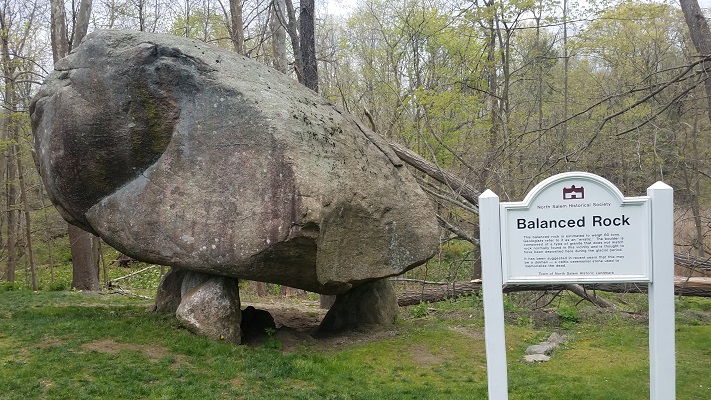
Gallery Examples of Perched Rocks
Glacial action on the New England Landscape left many stones in unusual positions which geologists call glacial erratic. Some are so easily explained. There are gigantic boulders perched precariously on supporting stones from a different source and placed in a defined geometric pattern. Some are sited so as to mark solar alignments for major calendar events.
Vyacheslav Mizin
DISTRIBUTION AND HYPOTHESES This article is intended to acquaint readers with concepts surrounding the distribution, origin, and associated cult of perched boulders, objects which remain a large riddle in both of the world’s hemispheres. The two basic theories concerning the formation of perched boulders are that they were created by glaciers, or were manmade. They are distributed in Ice Age areas of North America and Europe. Pedestal and perched boulders can have one, two, three, or more supports. Rather frequently, boulders are placed in such a way that they can shake. In some areas, perched boulders have special place names. It is interesting to note that the quantity of boulders in Europe decreases from North to South, according to the course of the glaciers. The challenge in this study is to determine how to properly compare obvious attributes of boulders in order to determine if they were glacier or man-made. Asking the right questions is essential if we are to obtain needed clues as the boulders’ creation: What are the origins of the cults* associated with perched boulders? What were the reasons or purposes for erecting perched boulders? Is there an ethnographic similarity among the native peoples in these regions?
Read full article (PDF): THE PERCHED BOULDERS By Vyacheslav Mizin, NEARA Journal. Vol 40 No. 2, Winter, 2006
By Jim Moore
An incalculable number of boulders were left in the wake of great shields of ice retreating northward during the last glacial epoch. A great number of these came to rest on bedrock surfaces as 'perched' boulders. Some of these are "foreigners" in the sense that they are a different bedrock unit than the native rock on which they lay. However, some came to rest in positions of a more precarious nature that caught the eye and imagination of early inhabitants from the Native Americans down to more modern day colonial settlers. Even before glacial theories became fact these rocks were oft times discussed amongst early geologists such as Amherst's Edward Hitchcock in his two treatises on Massachusetts's geology from 1835 and 1841. Hitchcock mused about the great quantities of water necessary to move such large rocks and wrote, "bowlders are by far the most instructive index of diluvial agency in Massachusetts."
The six sites discussed represent what I arbitrarily feel show the more exemplary examples of these features. Size, minimum point of contact, and how the rock might be tipped are the considerations I used in rocks that demonstrate the effect/illusion of being balanced. Indeed, early histories record these rocks as being capable of some limited movement thus gaining names such as Tipping Rock, Rolling Rock, Teetering Rock, etc. In almost all the cases I have personally observed, no movement was possible in the present time. Additionally, I have a couple of examples of 'doublets' or boulders upon a boulder that represent their own unique form of a balancing act.
Read full article: SOME BALANCED ROCKS IN MASSACHUSETTS By Jim Moore, NEARA Web Article,2002